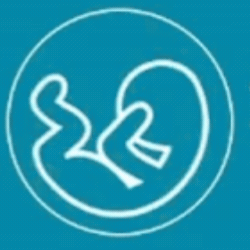Natural Birth vs. C-Section: An In-Depth Guide to Making the Best Choice for Your Delivery
Understanding Natural Birth
Natural birth, also known as vaginal birth, is the process of delivering a baby through the vaginal canal without the use of pain medications or medical interventions. It emphasizes the body’s natural ability to give birth and generally involves a more hands-on approach with fewer medical interventions. Know more about our preconception care and prepare for a natural birth.
Pros of Natural Birth:
1. Faster Recovery:
2. Lower Risk of Infection:
Natural birth avoids the risks associated with surgical procedures, including infections at the incision site. This generally leads to a lower incidence of postoperative complications.
3. Shorter Hospital Stay:
4. Enhanced Bonding:
5. Decreased Risk of Respiratory Issues for the Baby:
Cons of Natural Birth:
1. Pain Management:
2. Risk of Complications:
3. Perineal Tears:
4. Potential for Prolonged Labor:
5. Pelvic Floor Problems:
Natural birth can strain the pelvic floor muscles, potentially leading to conditions such as pelvic organ prolapse or incontinence. The pelvic floor supports the organs within the pelvis, and damage to these muscles can result in urinary or fecal incontinence and sexual dysfunction. Pelvic floor exercises and rehabilitation can help address these issues, but it’s important to discuss preventive measures with your healthcare provider. Here are some pelvic floor exercises for your pelvic floor health after childbirth.

Understanding C-Section
Pros of C-Section:
1. Predictable Scheduling
2. Reduced Labor Pain:
3. Safety in High-Risk Situations:
For pregnancies with identified risks, such as placenta previa, breech presentation, or multiple gestations, a C-section can be a safer option to protect both mother and baby. For pregnancies with identified risks, such as placenta previa, breech presentation, or multiple gestations
4. Immediate Delivery:
Cons of C-Section:
1. Longer Recovery Time:
2. Increased Risk of Infection:
3. Impact on Future Pregnancies:
4. Potential for Respiratory Issues in the Baby:
5. Long-Term Scar:
6. Pelvic Floor Preservation:
Reasons to Choose Natural Birth or C-Section
Choosing Natural Birth:
- Personal Preference: Many women prefer a natural birth for its minimal medical intervention and the ability to experience labor and delivery as naturally as possible.
- Previous Positive Experience: Women who have previously had a positive experience with natural birth may opt for the same approach in subsequent pregnancies.
- Desire for a Shorter Recovery Time: The prospect of a quicker recovery and shorter hospital stay can be a strong motivator for choosing natural birth.
Choosing C-Section:
- Medical Indications: Conditions such as high blood pressure, diabetes, or a previous C-section may necessitate a C-section for the safety of both mother and baby.
- Breech Presentation: If the baby is in a breech position (feet or buttocks first) and cannot be turned, a C-section may be recommended.
- Multiple Pregnancies: In cases of twins or higher-order multiples, a C-section may be planned to ensure a safer delivery for all babies.

Solutions to Common Concerns
Concerns About Pain Management:
- Natural Birth: Consider discussing pain relief options with your healthcare provider, such as epidurals, nitrous oxide, or other non-medical pain management techniques if you want a more controlled pain relief approach.
- C-Section: Ensure that you have a plan for pain management during recovery, including medications and support for mobility.
Concerns About Recovery Time:
- Natural Birth: Prepare for a quicker recovery by arranging for help at home and focusing on gentle postpartum care practices.
- C-Section: Plan for a longer recovery period by arranging for assistance with daily tasks and understanding the signs of potential complications.
Concerns About Pelvic Floor Health:
- Natural Birth: Engage in pelvic floor exercises during pregnancy and after delivery to strengthen and rehabilitate the pelvic muscles. Consult a pelvic floor specialist if you experience symptoms such as incontinence or pelvic discomfort.
- C-Section: While a C-section may reduce direct trauma to the pelvic floor, it’s still important to engage in postpartum exercises to support overall recovery and maintain pelvic health.
Concerns About Risks to Future Pregnancies:
- C-Section: Discuss the implications for future pregnancies with your healthcare provider and consider any additional monitoring or care that may be required.
Frequently Asked Questions (FAQ)
1. Can I opt for a natural birth after a C-section?
Yes, many women can have a vaginal birth after a cesarean (VBAC). However, this decision depends on several factors, including the reason for the previous C-section and the type of incision made. Discussing your options with your healthcare provider is essential to ensure a safe delivery. Understanding VBAC (Vaginal Birth After Cesarean) is important to know for every mother If you have had a previous cesarean delivery.
2. How can I prepare for a natural birth?
3. What are the signs that a C-section might be necessary?
4. How does a C-section impact breastfeeding?
5. Are there any long-term effects of having a C-section?
6. How can I address pelvic floor problems after a natural birth?
At FMGC, we understand the emotional and physical toll of pregnancies. Our team of best obstetrics gynecologists are committed to providing compassionate care and comprehensive support to help you through this blessed time. If you or a loved one is expecting, please reach out to us for expert care and guidance.
Contact Us: Feto Maternal & GenetYX Center Dubai, UAE
Follow Us on Social Media: Facebook: FMGC Facebook
Instagram: FMGC Instagram
LinkedIn: FMGC LinkedIn
Twitter: FMGC Twitter

